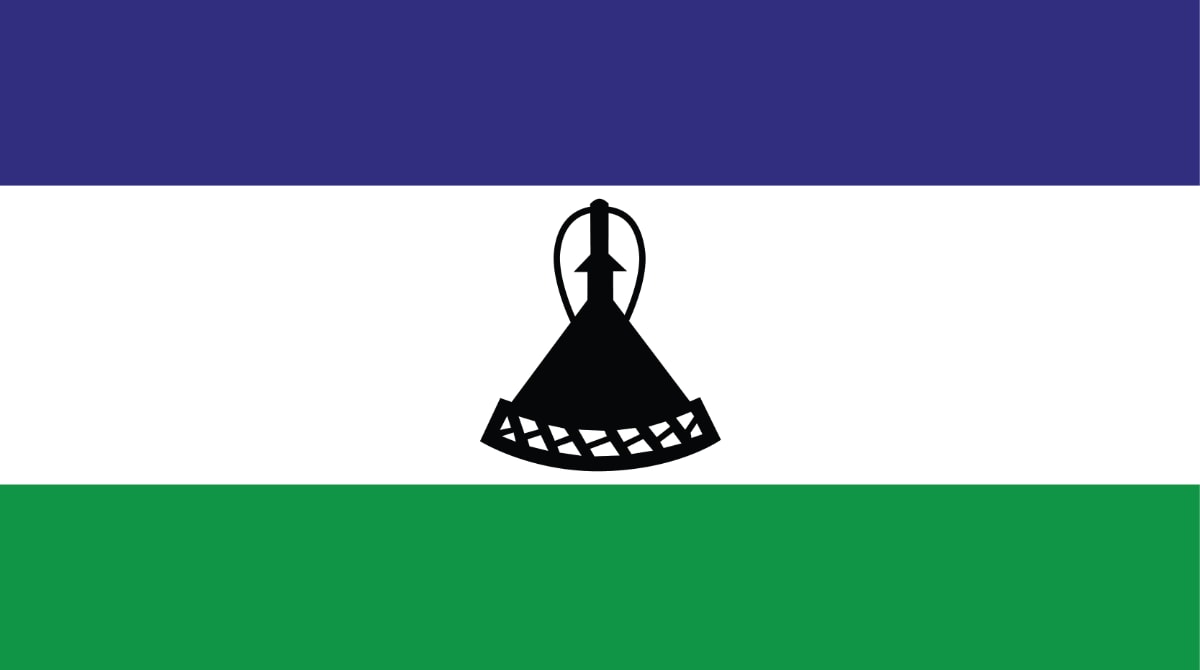At a glance
CDC works with partners in Lesotho to build sustainable public health capacity, strengthen laboratory systems and surveillance networks, deliver high-quality HIV and TB diagnostic, treatment, and prevention services, and respond swiftly to disease outbreaks at their source, preventing health threats from reaching the U.S.

Strategic focus
The U.S. Centers for Disease Control and Prevention (CDC) opened an office in the Royal Kingdom of Lesotho in 2007. In collaboration with the Ministry of Health (MOH) and implementing partners, CDC provides technical assistance and leadership in HIV and tuberculosis (TB) services, including improvements in treatment, prevention, laboratory capacity, health information systems, and strengthening health systems.
Read more about CDC's most recent key activities and accomplishments below.
Building public health capacity
- Supported the implementation of the electronic medical record (eRegister) in 195 (94 percent) of the U.S. President’s Emergency Plan for AIDS Relief (PEPFAR)-supported facilities to ensure data quality and informed decision-making. Now, 184 health facilities can conduct automated reporting for routine HIV and TB data from the eRegister to the national health information system.
- Integrated the eRegister and the laboratory information system for seamless data sharing between labs and healthcare facilities, significantly decreasing the time to receive lab test results from 21 to 4 days (on average).
Strengthening laboratory systems and networks
- Implemented quality laboratory systems for diagnosis, clinical monitoring, and evaluation of new testing technologies.
- Provided technical expertise for developing local capacity to improve national, regional, and clinical facility service delivery quality.
- Supported the expansion of laboratory facilities, quality improvement in HIV viral load (VL) testing, and the procurement of VL tests, early infant diagnosis laboratory test reagents, and TB testing supplies.
HIV prevention and treatment
- Worked closely with the MOH and partners to scale up HIV treatment and prevention services, including HIV testing, antiretroviral therapy (ART) initiation services, prevention of mother-to-child HIV transmission (PMTCT), integrated TB and HIV service delivery, and program activities using a targeted, district-based approach.
- Supported the national implementation of international guidelines for the effective use of ART for treating and preventing HIV. Nearly 99 percent of adults and children have transitioned to optimized ART regimens in 2021 and 2022.
- Improved the diagnostics, treatment quality, and cost-effectiveness, and expanded HIV testing services. CDC played a critical role in Lesotho’s achievement of 90 percent of people living with HIV (PLHIV) knowing their HIV status, including populations at greater risk of HIV.
- The results of the 2024 PMTCT data quality assessment showed that most of the reported data were accurate, with small differences of less than 5 percent.
Tuberculosis prevention and treatment
- Provided technical leadership in building capacity for HIV and TB treatment programs through service delivery and mentoring healthcare workers.
- Supported HIV clinical services integrated TB activities to identify and treat HIV-associated TB, increase uptake of TB preventive treatment, and enhance effective TB case finding and treatment using molecular diagnostics, chest X-rays, computer-aided diagnostics, and shortened TB treatment regimens. Over 85 percent of PLHIV on ART completed TB preventive treatment in FY2024.
By the numbers
HIV
Estimated HIV Prevalence (Ages 15-49)
18.5% (2023)
Estimated HIV Deaths (Age ≥15)
3,800 (2023)
Reported Number Receiving Antiretroviral Therapy (ART) (Age ≥15)
236,353 (2023)
TB
Estimated TB Incidence
664/100,000 population (2023)
Reported Percent of People with TB and HIV
50% (2023)
TB Treatment Success Rate
80% (2022)
